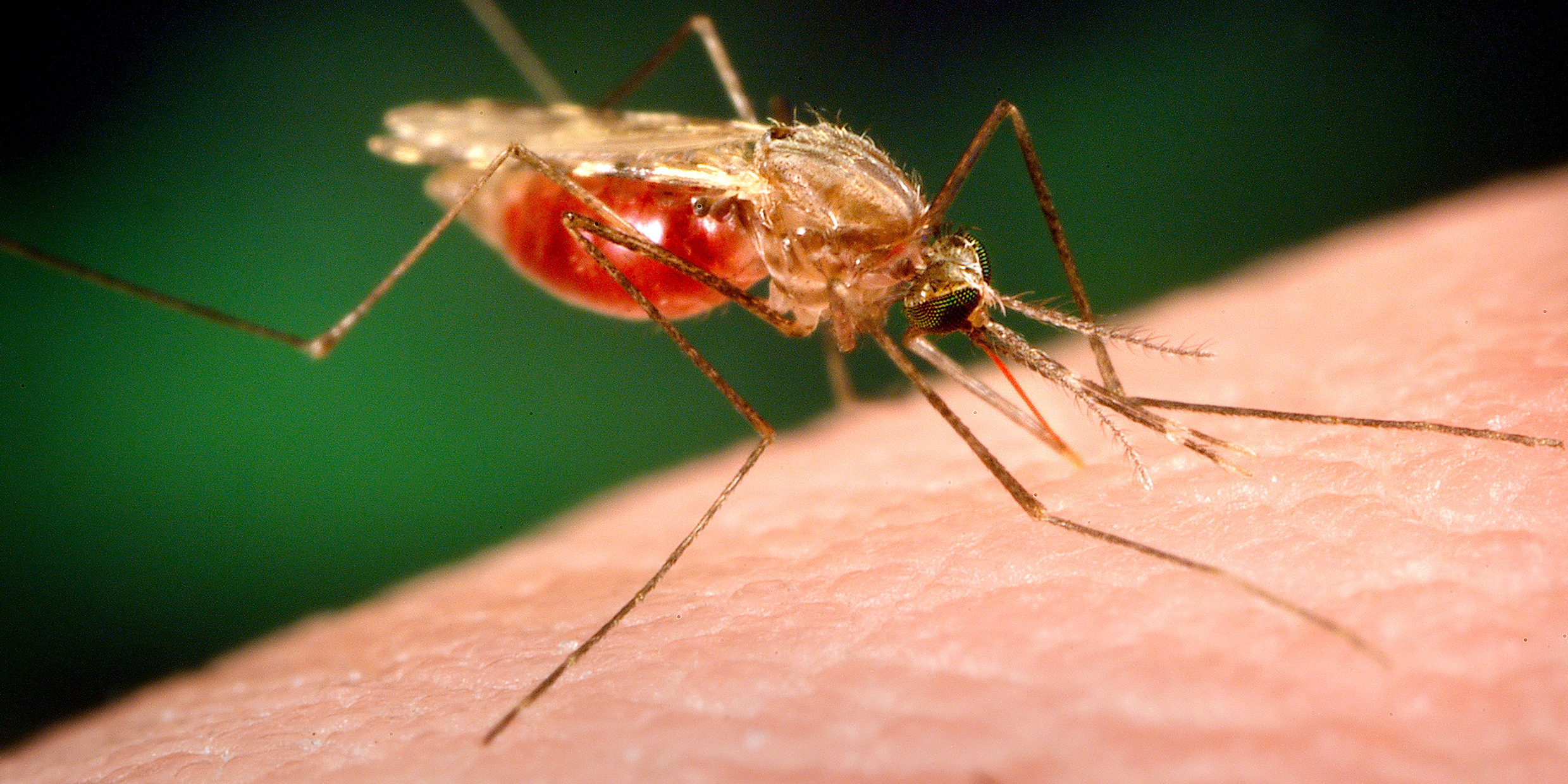Originally published 21 January 2007
Humans and mosquitos share an ancestor in deep time. Our kinship is revealed at the level of the genes. Certainly, we are enough alike chemically so that human blood protein is useful to the mosquito.
And, of course, we share the overarching purpose of all living creatures — to propagate our species.
If that were not enough, our lives are bound together by the malaria parasite, a nasty little creature named Plasmodium falciparum.
Plasmodium needs us. It needs an Anopheles mosquito.
There was a bit of a malaria scare on the island this past summer. Someone showed up here with the parasite in his blood. He was bitten. The infected mosquito bit another. More mosquitos entered the picture as Plasmodium was passed around. Before it was over, a dozen people were infected.
It is only the female mosquito we need worry about, and only mosquitos of the genus Anopheles. Male mosquitos have just two things on their minds: sex and nectar. And only enough nectar to have the energy for sex. The male mosquito isn’t interested in blood. So you can forget the male mosquito; he isn’t part of the story.
And what a story!
The female mosquito needs protein-rich blood to nourish her eggs. It need not be human blood, but increasingly we have made ourselves the most readily available item on her menu. Especially on this island where here are so few other mammals to share the bites. She may take more than one blood meal during her lifetime, which can have unfortunate consequences for her second victim.
When a malaria-infected mosquito bites a human, she injects a bit a saliva into the wound to keep the victim’s blood flowing freely. In the saliva are thousands of tiny threadlike creatures called sporozoites.
The sporozoites are carried by the bloodstream to the liver, where they leave the blood and penetrate a liver cell. Inside, the sporozoite transforms itself into a sporelike form, called a merozoite, and replicates over and over, destroying the liver cell and building a cyst that is jam-packed with merozoites.
After two weeks, the cyst bursts and spews its contents into the bloodstream. Each merozoite attaches itself to a human red blood cell and enters it. The merozoite feeds on hemoglobin, growing bigger, until it shatters into bits, each of which forms another merozoite. At last, the teeming blood cell explodes its contents back into the blood stream.
The process is repeated over and over, while the human host goes through bouts of fever. But now, an amazing thing happens. After several cycles of replication, some of the merozoites become sexual forms called gametocytes, male and female. These circulate in the bloodstream until the host is bitten by another mosquito. The Plasmodium gametocytes are sucked up along with their asexual companions.
The blood-gorged Anopheles flies away from its human victim. Inside the mosquito’s stomach the asexual merozoites die. Male gametocytes turn themselves into swarms of lashing, spermlike filaments, which penetrate the female gametocytes and fertilize them.
Each fertilized “egg” now transforms itself into a creepy-crawly thing that bores through the mosquito’s stomach wall, where it attaches itself on the outside of the stomach wall and becomes a cyst. Within the cyst, the material of the “egg” reorganizes itself into thousands of threadlike forms, the sporozoites. The cyst bursts, the sporozoites make their way to the mosquito’s salivary gland, and…
…and wait like bullets in a loaded gun for the mosquito to have her second blood meal.
This is the condensed version of the story. I left out, for example, the tricks Plasmodium plays to outwit our immune system.
Humans are necessary to Plasmodium’s life cycle as sources of food and places for explosive asexual reproduction. The mosquito is necessary as a vehicle for transport and as a bower for sexual expression.
It is often said that mosquitoes kill more humans than any other animal, but it is not mosquitoes that kill. It is the parasites they carry, most particularly the malaria pathogen, Plasmodium.
With our clever brains and scientific skills we are not passive victims. We discover or invent drugs to attack the pathogen or mitigate the symptoms of disease. We drain swamps where Anopheles lays her eggs. We spray with DDT. We distribute insecticide-impreganted bed nets in places where the disease is endemic.
And for a while, these stratagems work. Some places, the United States for example, are malaria-free. Except for a brief period this past summer, the island of Exuma was malaria free. Jeffery Sachs recently estimated that with a couple of billion dollars and political will on the part of rich nations malaria could be made history.
But Anopheles and Plasmodium are not without resources of their own — most particularly their quick reproductive cycles. Within mere decades, Anopheles has evolved immunity against pesticides. Plasmodium has evolved resistance to drugs. After a period of decline worldwide, malaria is resurgent. Today, malaria is the leading cause of death for children under five.
And so, the evolutionary river that flows out of Eden binds us together in a common fate — human, mosquito, malaria protozoa. Consciously or unconsciously, each of us is doing everything we can to increase the odds for our own survival.
Slap!



